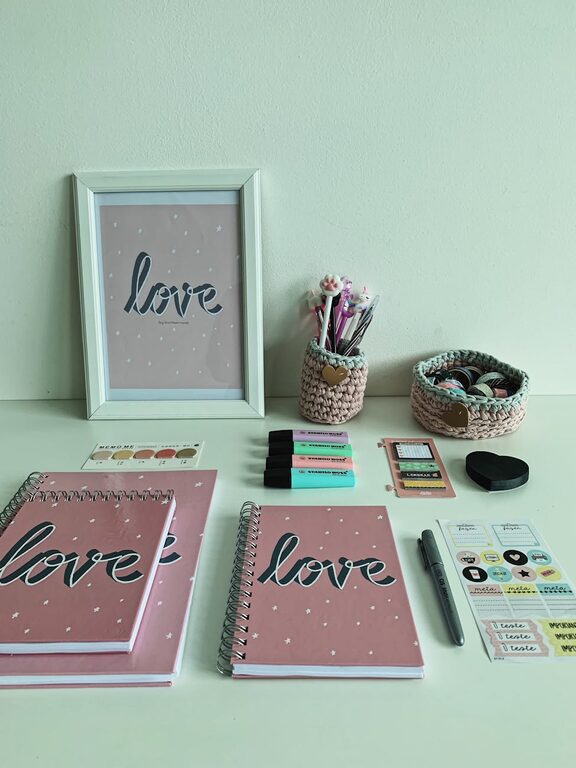Bullet journaling has become a popular method to organize tasks, track habits, and boost creativity — all within a single notebook. Whether you’re new to journaling or looking for a flexible planning system, bullet journaling offers a customizable and simple way to stay on top of your life. This beginner guide will walk you through the essentials to get started with bullet journaling and help you create a system that works for you.
What is Bullet Journaling?
Bullet journaling, often abbreviated as BuJo, is a method developed by Ryder Carroll. It combines a to-do list, diary, planner, and sketchbook into one notebook, using simple bullet points and symbols to represent different types of entries. The system is deliberately flexible, so you can adapt it to your own style and needs.
Why Choose Bullet Journaling?
– Customizable: You decide the layout and design based on your preferences.
– All-in-one system: Combines planning, reflection, and creativity.
– Mindfulness: Helps improve focus and manage stress.
– Low cost: Requires only a notebook and a pen.
Basic Supplies for Beginners
Starting your bullet journal doesn’t require fancy tools. Here’s all you’ll need:
– A notebook: Any notebook will do; popular choices include dotted or grid notebooks for easier layout.
– Pens: A reliable pen or fine-liner. Colored pens or markers are optional if you want to add color.
– A ruler (optional): To keep lines neat.
– Stickers or washi tape (optional): For decoration.
Core Elements of a Bullet Journal
To get started, let’s go over some essential parts of a bullet journal.
1. Index
The index is like the table of contents. It helps you find entries quickly by recording page numbers and topics.
– Start by reserving the first 2-4 pages for the index.
– As you add new collections or logs, write their title and page number here.
2. Future Log
The future log is where you keep track of long-term plans and important events for upcoming months.
– Divide a page or two into sections labeled by month.
– Write down appointments, deadlines, and significant dates.
3. Monthly Log
Each month gets a spread that includes a calendar and a task list.
– On one side, list the days of the month with space for notes or events.
– On the other, create a task list for goals and to-dos.
4. Daily Log
This is where your day-to-day tasks, events, and notes go.
– Write the date at the top of the page.
– List tasks with bullet points — use different symbols for tasks, events, and notes.
Basic Symbols and Signifiers
Bullet journaling relies on simple symbols to categorize items quickly.
| Symbol | Meaning |
|——–|———————|
| • | Task |
| ○ | Event |
| – | Note |
| x | Task completed |
| > | Task migrated forward |
| < | Task scheduled earlier |
Feel free to customize or add your own symbols as you grow more comfortable.
Setting Up Your First Bullet Journal
Here’s a step-by-step guide to creating your first bullet journal setup.
Step 1: Prepare Your Index
Leave 2-4 pages at the beginning and title it “Index.” You will fill this in as you go.
Step 2: Create a Future Log
Divide two pages into six sections, labeling each with upcoming months. Write known events or deadlines here.
Step 3: Set Up Your First Monthly Log
For the current month, create your calendar and task list on a two-page spread.
Step 4: Start Your Daily Logs
Begin your daily log with today’s date. Write tasks, events, and notes as they come up.
Step 5: Use Your Bullet Journal Daily
Check back each morning or evening to add new tasks or migrate incomplete ones.
Tips for Successful Bullet Journaling
– Keep it simple to start. Avoid overcomplicating layouts.
– Review regularly: Weekly or daily reviews help keep you organized.
– Customize as needed: Add collections like habit trackers, meal planners, or gratitude logs.
– Be patient: Your system will evolve over time.
– Use online resources: There are many inspirations on social media and blogs.
Example Collections to Try
– Habit tracker: Track habits like exercise or reading daily.
– Mood tracker: Monitor your emotional wellbeing each day.
– Gratitude log: Write down things you’re thankful for.
– Project planner: Break down large projects into actionable steps.
– Budget tracker: Record spending and savings goals.
Final Thoughts
Bullet journaling is a flexible and creative way to stay organized in your busy life. It allows you to combine productivity with personal expression, offering a unique planning experience. Remember, it’s all about what works best for you — so experiment with layouts, symbols, and ideas until you find your perfect system.
If you’re ready to start, pick up a notebook and pen, and begin your bullet journaling journey today. Happy journaling!

